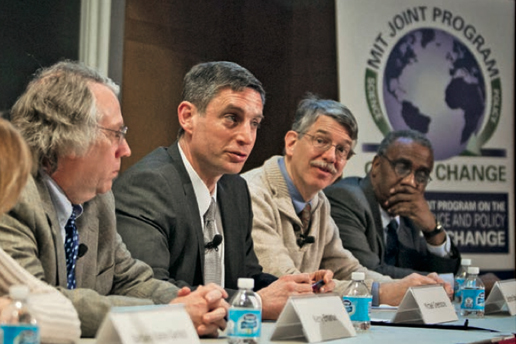
In late October, “Superstorm Sandy” hit the shores of the United States, leaving an estimated $62 billion of damage in its wake. In New York City, 13-foot storm surges broke all records. What does increased climate variability mean for Massachusetts? How can we prepare for and adapt to the changing climate? This topic was the focus of a variety of activities during MIT’s Independent Activities Period (IAP) in January 2013. Participants attended discussions and presentations involving Massachusetts officials and MIT researchers (see below). In other sessions, they helped to weatherize a Cambridge building, found out how to use GIS-based energy maps and spatial data to locate power plants and pipelines, and toured Boston’s subway tunnels and learned what America’s oldest subway system is doing to modernize and adapt to change.
MIT researchers, Massachusetts officials highlight strategies to adapt to climate change
Just days after President Obama called for action on climate change in his second inaugural address, members of Massachusetts Gov. Deval Patrick’s administration joined energy and environment researchers at MIT to discuss strategies for adapting to climate change. The panel discussion on January 23, 2013, fostered a continued partnership between MIT and the Commonwealth to advance energy and environment innovation.
IAP event showcases student research
MIT students brought their latest climate change ideas and findings to the table at an event on January 29, 2013. The multidisciplinary group of young researchers made presentations to officials from the Commonwealth’s Executive Office of Energy and Environmental Affairs in hopes that the state would be able to leverage the information for future planning and implementation.
This article appears in the Spring 2013 issue of Energy Futures.
Press inquiries: miteimedia@mit.edu